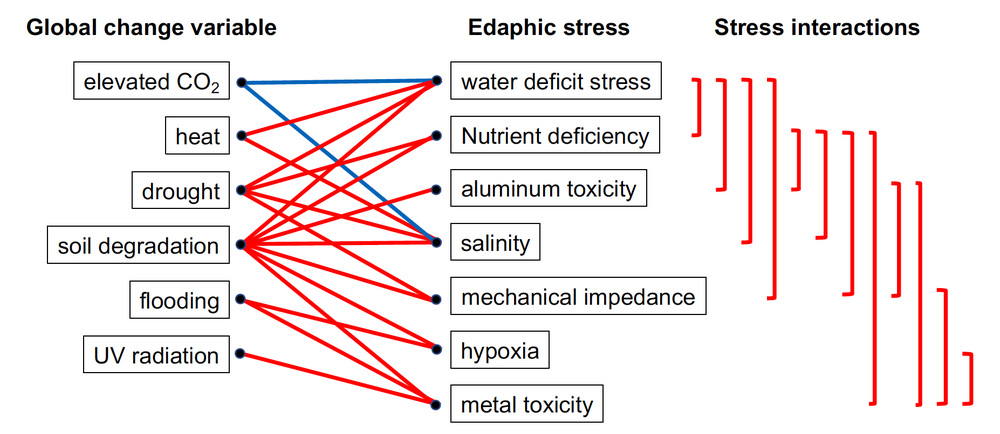
Edaphic stress interactions
Authors
JP Lynch
Source
Field Crops Research, Volume 283, 1 July 2022, 108547
Download Options
https://doi.org/10.1016/j.fcr.2022.108547
Abstract
Most terrestrial plants experience multiple edaphic (i.e. soil-related) stresses concurrently. Interactions among edaphic stresses may be characterized by dominance of one stress over others, neutral interactions whose effects are additive, mitigating interactions in which the effects of multiple stresses are less than additive, potentiating interactions in which the effects of multiple stresses are greater than additive, and dynamic equilibria in which plant responses seek to minimize all stresses concurrently. Existing theoretical paradigms, notably the Law of the Minimum and the Multiple Limitation Hypothesis, do not adequately account for interactions of edaphic stresses. Reduced growth resulting from edaphic stress is itself an important modulator of stress interactions by reducing resource demand as well as reducing soil resource capture. Root adaptations to one edaphic stress may either mitigate or potentiate other edaphic stresses, as evidenced by the examples of root architectural tradeoffs for water and P capture, in contrast to root architectural synergies for water and nitrate capture. In high-input agroecosystems, edaphic stress complexes of global importance include mechanical impedance/poor soil structure/drought stress, and salinity/drought stress. In low-input agroecosystems, globally important edaphic stress complexes include drought and low soil P availability, as well as the acid soil complex, characterized by toxicity of Al and possibly Mn, combined with low availability of P, K, Ca, and Mg. Global climate change is likely to exacerbate edaphic stress, by increasing the severity and frequency of drought and flooding, accelerating soil degradation, and altering plant phenology. Many of the edaphic stresses exacerbated by global climate change have potentiating interactions with each other, which is likely to make them more harmful than anticipated from their direct effects. Edaphic stresses linked to climate change are likely to have severe impacts in developing nations, which generally have more problematic soils and more limited management options than developed nations. The potential benefits of CO2fertilization for plants in future climates may be mitigated by edaphic stress. Edaphic stress interactions are a challenge for crop breeding programs, because resistance to edaphic stress is generally quantitative and may display fitness tradeoffs with other edaphic stresses. Germplasm evaluation in farmer’s conditions, ideotype breeding, and deployment of root phenotypes with utility for multiple edaphic stresses, such as long, dense root hairs, and root cortical aerenchyma, would be helpful in this context. Interactions among edaphic stresses are key drivers of plant growth in the majority of global soils. Improved understanding of edaphic stress interactions is needed to develop the more resilient, stress tolerant crops and cropping systems that are urgently needed in global agriculture.

